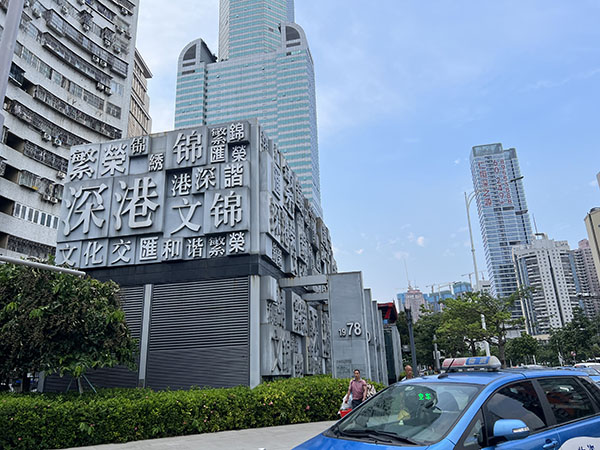These past few days we’ve been “eating melons,”–the colloquial expression for watching other people’s drama. This time, its an internecine melodrama starring the Shuiwei and Huanggang Zhuangs.


These past few days we’ve been “eating melons,”–the colloquial expression for watching other people’s drama. This time, its an internecine melodrama starring the Shuiwei and Huanggang Zhuangs.

More publicity about Handshake 302.

Today, I’m in an English language reader for Chinese elementary and middle school students! I’m in the People Power section along with Zou Hongtao (who came to Shenzhen in 1979 with the Corps of Civil Engineering) and Frank Wang Tao (汪滔), the founder of DJI. It’s true, China’s Foreign Language and Teaching Press is putting out a series of graded readers for young students and I’m in the Shenzhen book, City of Miracles.



In 2023, we said, “Let’s see what happens after COVID.”
By April 2024, we were asking, “Where are you headed?”
Continue reading
What is the population of Shenzhen? This question remains tough to answer because there is the official hukou population, the official long-term population, and the population of everyone who lives here or is here… Anyway, according to the Shenzhen Statistics bureau website, in 2022 the city’s population was 17.66 million. However, according to journalist Nan Zhaoxu, who does wonderful work ferretting out those bureaucratic nooks and crannies where alternative truths might be found, on Jan 1, 2022, the city processed 22.19 million covid swabs, making the difference between the official and resident populations about 4.5 million souls. Long story short: Since the mid 2010s, I have thought of the city as home to 20 million people. I am now bumping that figure up to 22 million.
This may mean that ways of counting people are finally catching up to the city’s actual number of residents because both population turnover and growth seem to have significantly slowed. However, it may also be the case that different bureaus have different forms of legitimacy as well as quite different relationships to the city. Public health, for example, was tasked to test everyone in the city. In contrast, education bureaus are only responsible to official youth. In this sense, the city’s “population” is the result of bureaucratic actions (such as registering people), rather than a group that exists as such.

I wrote an article about the awkwardness of Handshake 302’s Baishizhou praxis. It came out in 碧山 14, January 2024.


Before Shijie and Dafu opened their restaurant, 「主局·韩式炸猪蹄」, they had decided not to offer takeout service. Many of their friends have told them, “if you don’t provide take out service from your restaurant, you’ll never survive in Shenzhen.” Handshake 302 was curious to hear their story and to understand the reasons behind their decision. We also wondered, “how important is takeout to an individual restaurant owner? Can a restaurant survive without offering takeout service?” Consequently, we invited them to be the special guests of the third edition of Singleton Takeout. Frankly speaking, we learned a lot from their honest thoughts about their new endeavor.



Its official: Liu He has made take-out ordering skills. On Saturday, September 23, he ordered a rich and satisfying meal for participants in the second edition of “Singleton Take-out.” What’s more, the selection of Chinese and western foods came with different condiments, meaning that during the handicraft part of the event, there were many different kinds of packaging to use.
Continue reading
The Shenzhen-Hong Kong border at Luohu manifests the contradictions and aspirations of integrating the two cities. On the one hand, the border has been solidified with concrete and barbed wire, while on the other, the border is presented as an easily accessible gateway to a modern shopping experience. Indeed, the concrete and barbed wire fence that lies parallel to the border is located directly behind Luohu Plaza, as seen in the pictures below.

